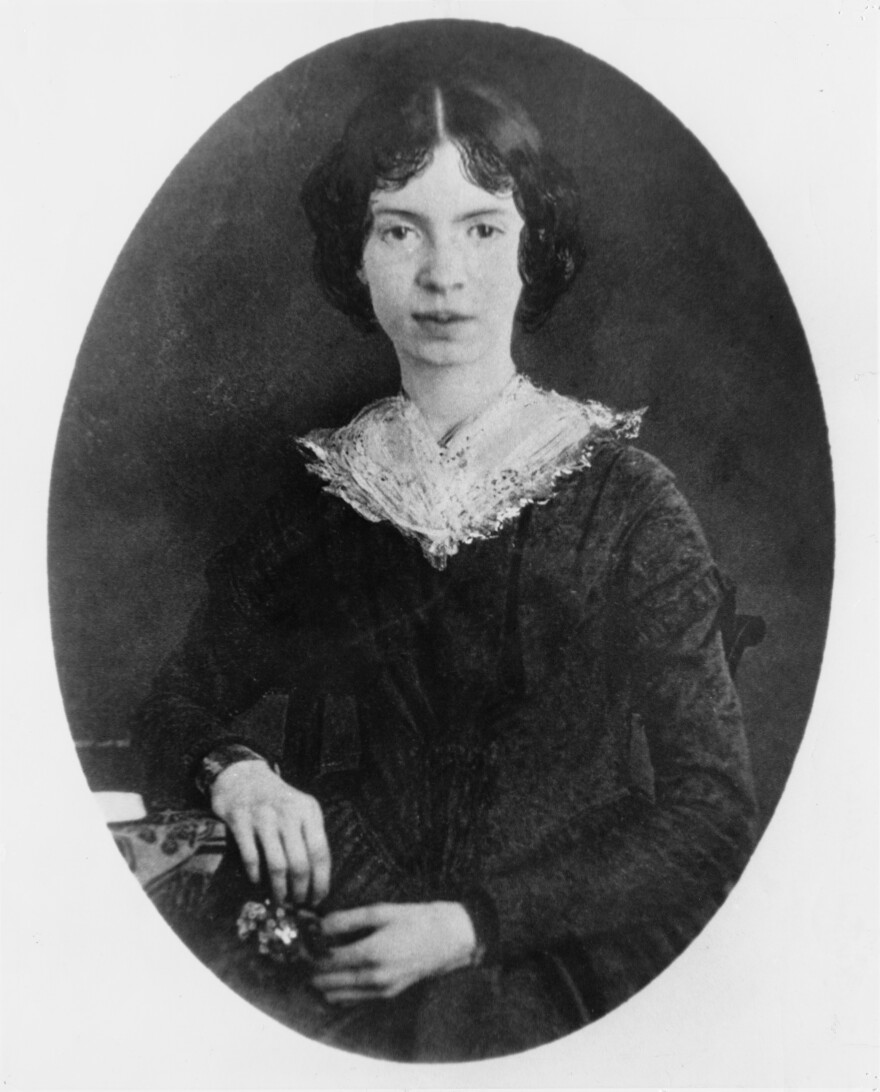Among the Great Moments in Literary History I wish I could've witnessed is that day, sometime after May 15, 1886, when Lavinia Dickinson entered the bedroom of her newly deceased older sister and began opening drawers.
Out sprang poems, almost 1,800 of them. Given that Emily Dickinson had only published a handful of poems during her lifetime, this discovery was a shock.
" 'Hope' is the thing with feathers/That perches in the soul," begins one of those now-famous poems.Whatever Dickinson hoped for her poems, she could never have envisioned how they'd resonate with readers; nor how curious those readers would be about her life, much of it spent within her father's house in Amherst, Mass., and, in later years, within that bedroom.
Every so often, the reading public's image of Emily Dickinson shifts: For much of the 20th century, she was a fey Stevie Nicks-type figure — check out, for instance, the 1976 film of Julie Harris' lauded one-woman show, The Belle of Amherst.
A feminist Emily Dickinson emerged during the Second Women's Movement, when poems like "I'm 'wife' " were celebrated for their avant garde anger. And, jumping to the present, a new monumental volume of Dickinson's letters — the first in more than 60 years — gives us an engaged Emily Dickinson; a woman in conversation with the world, through gossip, as well as remarks about books, politics and the signal events of her age, particularly the Civil War.

This new collection of The Letters of Emily Dickinson is published by Harvard's Belknap Press and edited by two Dickinson scholars, Cristanne Miller and Domhnall Mitchell. To accurately date some of Dickinson's letters, they've studied weather reports and seasonal blooming and harvest cycles in 19th century Amherst. They've also added some 300 previously uncollected letters to this volume for a grand total of 1,304 letters.
The result is that The Letters of Emily Dickinson reads like the closest thing we'll probably ever have to an intimate autobiography of the poet. The first letter here is written by an 11-year-old Dickinson to her brother Austin, away at school. It's a breathless, kid-sister-marvel of run-on sentences about yellow hens and a "skonk" and poor "Cousin Zebina [who] had a fit the other day and bit his tongue ..."
The final letter, by an ailing 55-year-old Dickinson — most likely the last she wrote before falling unconscious on May 13, 1886 — was to her cousins Louisa and Frances Norcross. It reads:
In between is a life filled with visitors, chores and recipes for doughnuts and coconut cakes. There's mention of the racist minstrel stereotype Jim Crow, as well as of public figures like Florence Nightingale and Walt Whitman. There are also allusions to the death toll of the ongoing Civil War.
Dickinson's loyal dog Carlo walks with her, and frogs and even flies keep her company. Indeed, in an 1859 letter about one such winged companion, Belle of Amherst charm alternates with cold-blooded callousness. Dickinson writes to her cousin Louisa:
Dickinson's singular voice comes into its own in the letters of the 1860s, which often blur into poems: cryptic, comic and charged with Awe. A simple thank-you note to her soul mate and beloved sister-in-law, Susan Gilbert Dickinson, reads:
There are 1,304 letters, and, still, they're not enough. Scholars estimate that we only have about one-tenth of the letters Dickinson ever wrote. And, on that momentous day in 1886, Lavinia entered her sister's bedroom to find and successfully burn all the letters Dickinson herself had received from others during her lifetime. Such was the custom of the day. Which makes this new volume of Dickinson's letters feel like both an intrusion and an outwitting of the silence of death — something I want to believe Dickinson would have relished.
Copyright 2024 Fresh Air. To see more, visit Fresh Air.




